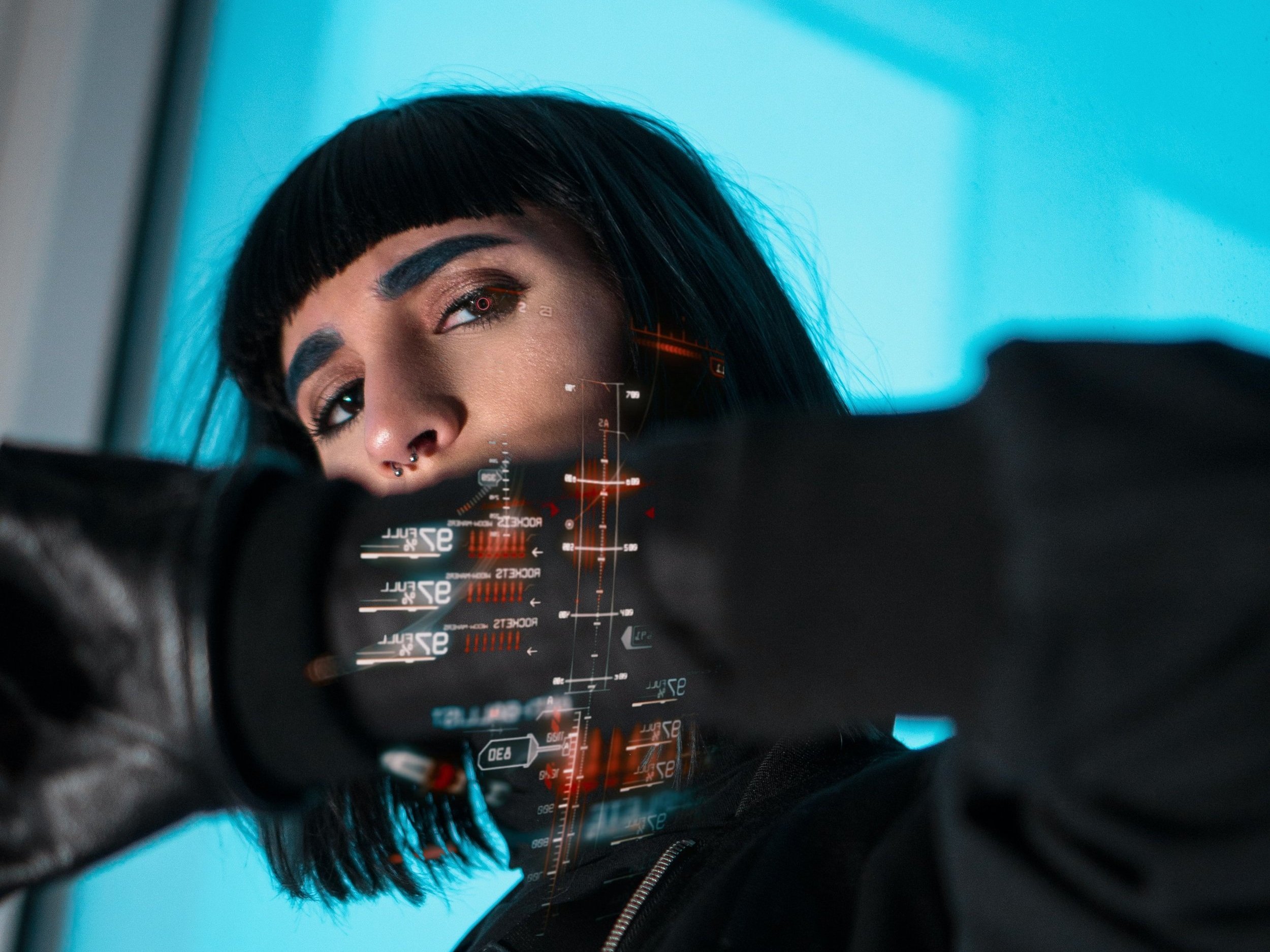Why Neuroscience and Consumer Psychology Are Key to Unlocking Phygital Retail
Key points for applying consumer psychology to phygital retail:
The key to understanding phygital retail is to take a step back and observe that purchase decisions come down to two fundamental elements of consumer psychology: pleasure and pain
At the level of neuroscience, this translates directly to: pleasure - pain = purchase intent
For pleasure, phygital retailers have the ability to drive anticipated pleasure and psychological ownership prior to purchase.
When it comes to pain, phygital marketers can turn down the pain of paying by using seamless, automated payment systems, such as those in use by AmazonGo
Ever thought about just nabbing that item off the shelf and walking right out? You're not alone. Research suggests that roughly a quarter of all Americans fantasize about shoplifting regularly, and the number that actually goes up the richer someone is.
If you count yourself amongst the law-abiding klepto-enthusiasts, there's good news. Now you can act out this shoplifting fantasy legally. Welcome to AmazonGo, the e-commerce giant's high-tech grocery store. It's shopping, with a shoplifting twist. You go in, select your items, and walk out—the taste of shoplifting with none of the risks.
As of 2021, there are only 29 current locations, but Amazon is just getting started. They've announced plans to open 3,000 more such stores in the coming years, with plans to trial these at their Whole Foods locations as well. And as impressive as their investment is, they're far from alone. There are currently over 150 companies focused in different technological areas working on automated, cashier-less, brick-and-mortar retail, including Alibaba, 7-11, and JD.com.
These stores are part of a broader trend called phygital retail: consumer experiences that creatively integrate physical and digital elements. Typically, this means integrating digital sensors, facial recognition, augmented reality, and virtual reality into the physical retail environment.
Given the novelty of these retail experiences, much of the focus has been on the "wow" factor. Indeed, few consumer experiences allow you to simulate the thrill of shoplifting without the worry of being tackled by security. However, the impact on consumer behavior goes much deeper, impacting the very mechanisms that drive the purchasing experience.
To understand this, we need to dive headfirst into consumer psychology. Let's first look at the neuroscience that drives purchasing behavior in general, and then examine how the phygital environment influences these mechanisms.
The Consumer Psychology of Pleasure and Pain
Most of the time anyway, we don't give in to these shoplifting fantasies. Instead, we pay for the items we want. But why do we buy what we buy? The reasons and mechanisms behind any given purchase are complex. Sometimes, this is an impulse buy, such as a candy bar at the checkout aisle. Other times, this is more deliberate and thought out, such as your car insurance or an investment product.
But whatever the product is, there are two crucial components of consumer psychology: pleasure and pain. Let’s unpack both.
First up: pleasure. When you encounter a product, such as a new pair of shoes, you naturally imagine what it would be like to wear and own them. How much do you think you're doing to enjoy it? The anticipation of future pleasure is a key response in any purchase decision and is represented in the brain by activity in a small region known as the nucleus accumbens.
As you're standing there imagining your new life with these new shoes, an ugly thought crosses your mind: How much do they cost? How do I pay for them? This is the second psychological component, the pain of payment. Believe it or not, we find the idea of parting with money to be psychologically painful. And the greater the price, the more pain we feel. The aversion we feel towards paying is represented in a large fold of the brain's cortex known as the insula.
These two specific brain regions - the nucleus accumbens for pleasure, and the insular cortex for pain are key. Previous research examining the underlying neuroscience of this consumer psychology has found that purchase intent can be predicted by looking at the activity in these two regions alone.
This derices a simple marketing formula: Nucleus accumbens activity - insular cortex activity = purchase. The more significant the gap between pleasure and pain, the more likely the purchase is.
With this general framework in mind, let's now focus on how the phygital consumer environment impacts this. Marketers are in the business of widening this gap by either increasing the anticipated pleasure, decreasing the pain of payment, or both. But as we'll see, phygital marketing provides a whole new set of tools.
Let's dive in, starting on the pleasure side of the equation.
How the Anticipation of Pleasure Influence Product Experiences
The pleasure response is a fickle thing. It's not actually about the pleasure you experience with the product, but about anticipated pleasure. This is a big difference.
When you're standing there considering those shoes, several factors can boost this anticipated pleasure. Research has found, for example, that physically interacting with goods leads to more profound attachment and emotional connection. The more you hold those shoes, and even try them on, the more real the simulated experience of owning them is. And if this is a positive simulation, the more pleasure you anticipate from them.
The same is true for customization as well. Imagine having the opportunity to not only touch and feel the shoes, but to have a role in designing them as well. Maybe adding a new color, switching up the laces, or engraving a message in the soles. This is exactly what services like NikeByYou provide, and research has found that, when done right, this type of personalization also boosts the anticipated pleasure and feelings of psychological ownership.
The bottom line is this: the more interaction between the production process and the product itself, the deeper the attachment becomes and the more anticipated pleasure.
And here's where phygital tools take this to the next level.
The Influence of Augmented Reality and Facial Recognition
It turns out that the interaction doesn't need to be "real" for it to impact the pleasure response. Digital simulations can be just as impactful, if not more.
The utilization of Augmented Reality (AR), for example, can provide exactly this kind of interaction. Here, consumers can stay home and "try on" those shoes without ever leaving the couch. These technologies may be put to similar use with other kinds of products, including housewares or appliances, which can be enhanced through visualization within the actual home environment. Make-up giant Ulta has also tested this approach with their "GLAMlab technology," an AR-based system that allows consumers to virtually "try on" any combination of make-up they'd like.
Phygital approaches also provide the opportunity for greater customization and personalization. For example, at select Walgreens retail locations, the company is trialing "smart coolers," which uses facial recognition technology to provide personalized drink recommendations. Other brands, such as Levi's, give the opportunity for in-store consumers to become directly engaged in the production process by designing their own custom-made jeans that they can purchase on the spot.
Interactivity is the name of the game when it comes to boosting anticipated reward. And phygital tools allow clever designers to provide this in broader, more interesting, and more creative ways than otherwise possible.
The Neuroscience of Payment Psychology
Dental visits aside, the most painful aspect of any consumer experience is paying for the product. This is why payment psychology is so crucial. We find parting with cash to be legitimately painful, so much so that the thought of it activates the insular cortex, a region of the brain associated with physical and emotional discomfort.
Clearly, the more you spend, the more painful the translation. Parting with $50 is much more painful than parting with $5. However, this is only part of the story. Parting with the same $50 can feel very different depending on how you part with it. Remember, this is psychological pain, and so it plays by psychological rules.
When it comes to psychological pain, the more real it feels, the more potent it is. The most painful way to pay them is to physically hand over cold hard cash. That's about as real as it gets. One instant, it's your hard-earned, tangible dollars. Next, it's in someone else's hands. At the level of neuroscience, this is essentially a direct assault on our insular cortex.
From here, anything that makes the payment experience less concrete, makes it feel less real. And crucially, less painful. This is why as time has gone on, different payment methods have been developed, which take the consumer further and further away from the concreteness of the transaction.
In the last decade or so, this has gone from paying with cash to paying with checks, paying with debit cards, credit cards, swiping an iPhone, a watch, your face, etc. Each new method feels, psychologically, more abstract, and therefore less painful. At the end of the day, money is still spent, but the spending process is less aversive. And less pain means more spending.
Phygital Marketing Solutions for Payments
And here's where phygital design comes in. What's the only thing less painful than a seamless, abstract payment experience at the register? How about not having to stop at the register at all. This is, of course, describing the experience at AmazonGo, in which you can simply walk out of the store without any noticeable transaction at all. And without a register, too, you likely don't even know the full amount.
Similar implementations have been trialed at locations of Kentucky Fried Chicken in China. Here, customers come in, enjoy their meals, and automatically pay as they exit through facial recognition software.
Payments, even with abstractions such as credit cards or Apple Pay, are psychologically painful. But when technology is used to create such a seamless experience, that pain is almost completely numbed.
Phygital Retail and The Future of Shopping
The ascent of Amazon, and a global pandemic. It's hard to imagine a more potent one-two punch facing industry, and yet that is exactly what physical retail has come up against these past few years.
If retail is to make a return, they're going to need to get innovative. And as we've seen, going phygital might be just the way for brands do it.
Implicit in the excitement about phygital shopping is that it can provide advantages about and beyond purely physical experiences and strictly digital experiences. But to understand exactly how this plays out, we need to see how these different elements impact the mechanisms of consumer psychology.
This all comes back to the key neuroscientific framework of pleasure - pain = purchase intent. When done right, phygital experiences can drive both of these levers: boosting anticipated pleasure for the product while decreasing the pain of payment.
And with experiences so stellar, who even wants to shoplift?
Photo by Justin Peralta on Unsplash
References for Applying Neuroscience and Consumer Psychology to Phygital Retail Experiences
Nofal, E.; Reffat, M.; Vande Moere, A. Phygital heritage: An approach for heritage communication. Immersive Learn. In Immersive Learning Research Network; Verlag der Technischen Universität Graz: Graz, Austria, 2017; pp. 220–229.
Johnson, M., & Barlow, R. (2021). Defining the Phygital Marketing Advantage. Journal of Theoretical and Applied Electronic Commerce Research, 16(6), 2365-2385.
Kestenbaum, R. (2018) The Impact of 3000 Amazon Go Stores Will Be Massive.
Knutson, B.; Rick, S.; Wimmer, G.E.; Prelec, D.; Loewenstein, G. Neural Predictors of Purchases. Neuron 2007, 53, 147–156.
Knutson, B.; Wimmer, G.E.; Rick, S.; Hollon, N.G.; Prelec, D.; Loewenstein, G. Neural Antecedents of the Endowment Effect. Neuron 2008, 58, 814–822.
PSFK. (Jan, 2018) Levi's Experiential Flagship Store 2018.
Whaling, P. (2019) Interview: How The Container Store Is Reinventing The 'Big Box" Experience For The Next Generation.' PSFK 2019.

